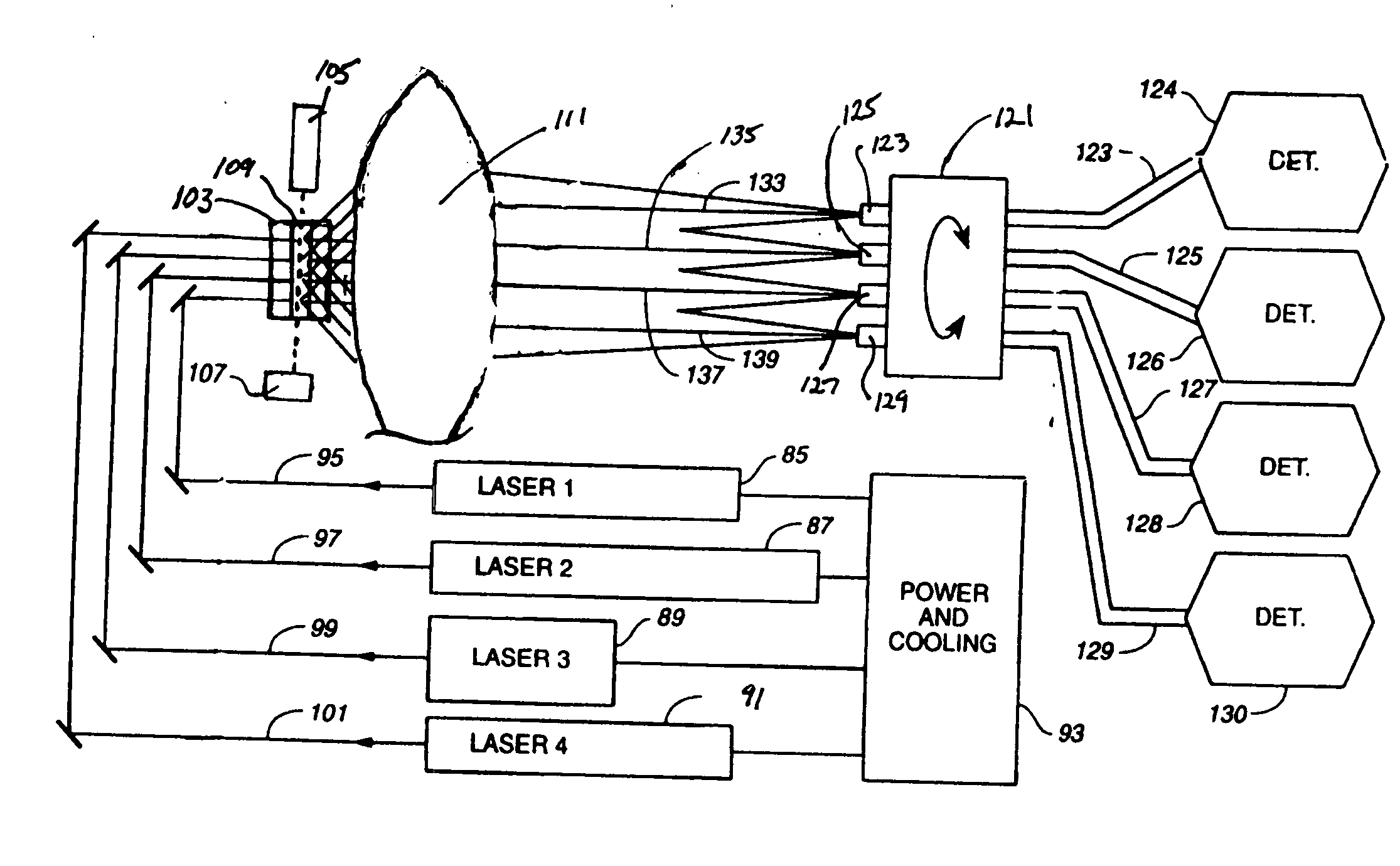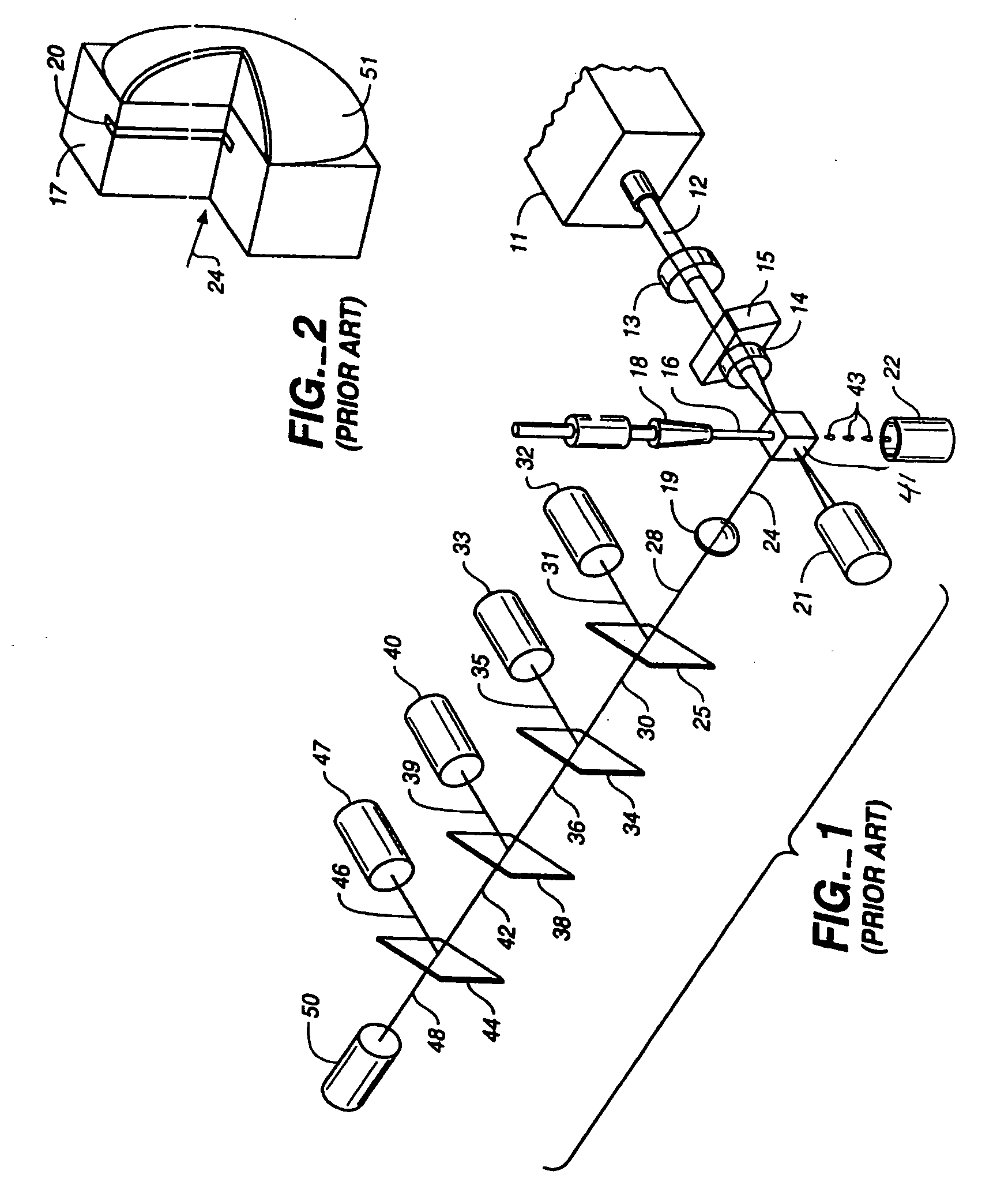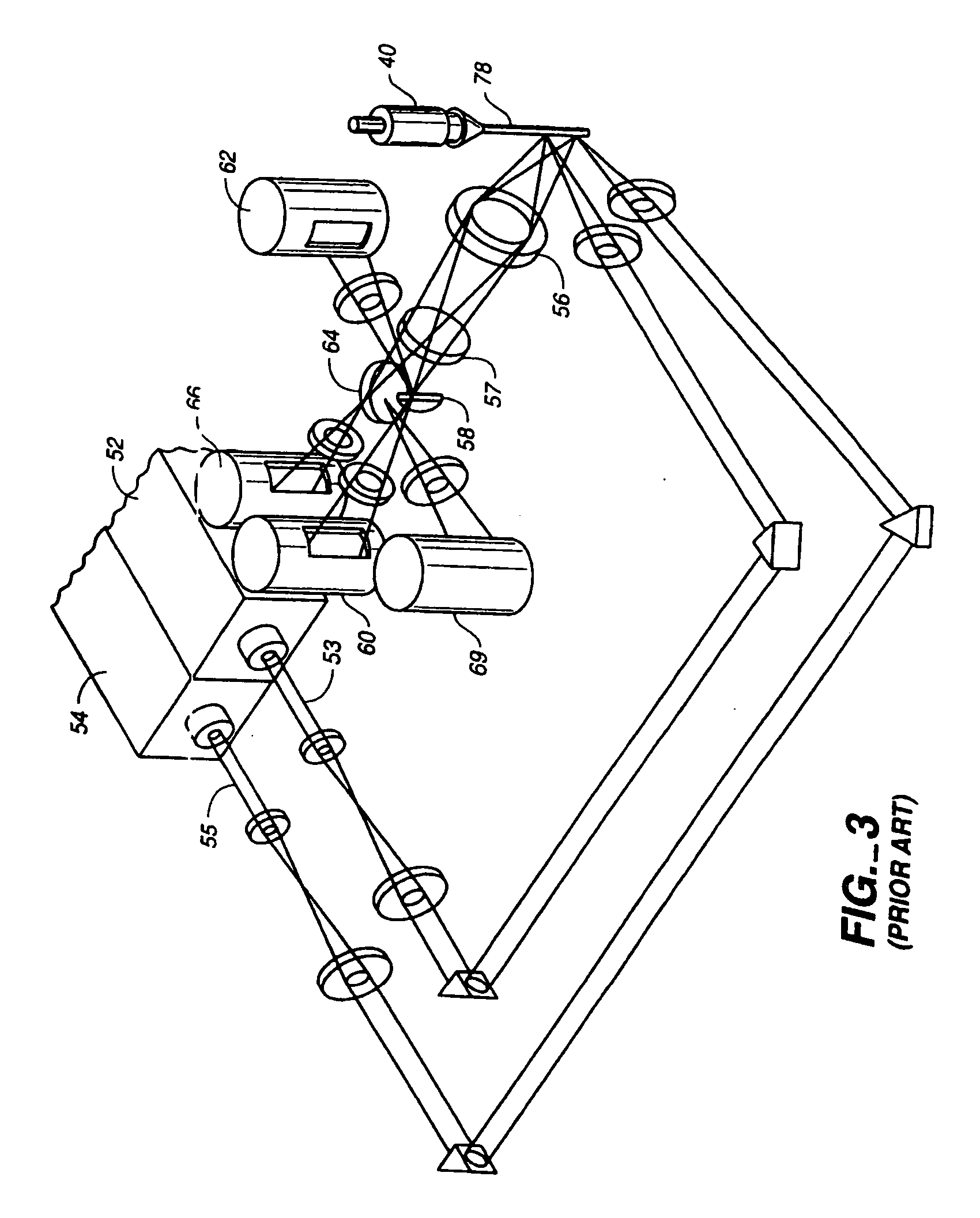Fluorescence detection instrument with reflective transfer legs for color decimation
a technology of color decimation and fluorescence detection, which is applied in the direction of fluorescence/phosphorescence, luminescent dosimeters, optical radiation measurement, etc., can solve the problem that other angles will not work as efficiently
- Summary
- Abstract
- Description
- Claims
- Application Information
AI Technical Summary
Benefits of technology
Problems solved by technology
Method used
Image
Examples
Embodiment Construction
[0027] With reference to FIG. 4, a first laser 85, a second laser 87, a third laser 89, and a fourth laser 91, all produce light with unique wavelength profiles and all are connected to respective power supplies and a cooling module 93. The lasers emit respective beams 95, 97, 99 and 101 which are directed by means of beam-turning mirrors toward flow stream 103 causing the beams to intersect with the stream. Although the preferred embodiment features a flow cytometer, this instrument is merely illustrative of instruments which employ fluorescence detection and color separation. Other instruments include microscopes, electrophoresis instruments, spectrophotometers, and the like. The scope of the present invention is therefore not limited to flow cytometers.
[0028] A fluidic system 105 feeds tagged target liquid substances into a stream 103 in a controlled manner. Material which passes through the beam illuminated zone is collected in collection cup 107. The illuminated zone is establ...
PUM
 Login to View More
Login to View More Abstract
Description
Claims
Application Information
 Login to View More
Login to View More - R&D
- Intellectual Property
- Life Sciences
- Materials
- Tech Scout
- Unparalleled Data Quality
- Higher Quality Content
- 60% Fewer Hallucinations
Browse by: Latest US Patents, China's latest patents, Technical Efficacy Thesaurus, Application Domain, Technology Topic, Popular Technical Reports.
© 2025 PatSnap. All rights reserved.Legal|Privacy policy|Modern Slavery Act Transparency Statement|Sitemap|About US| Contact US: help@patsnap.com



